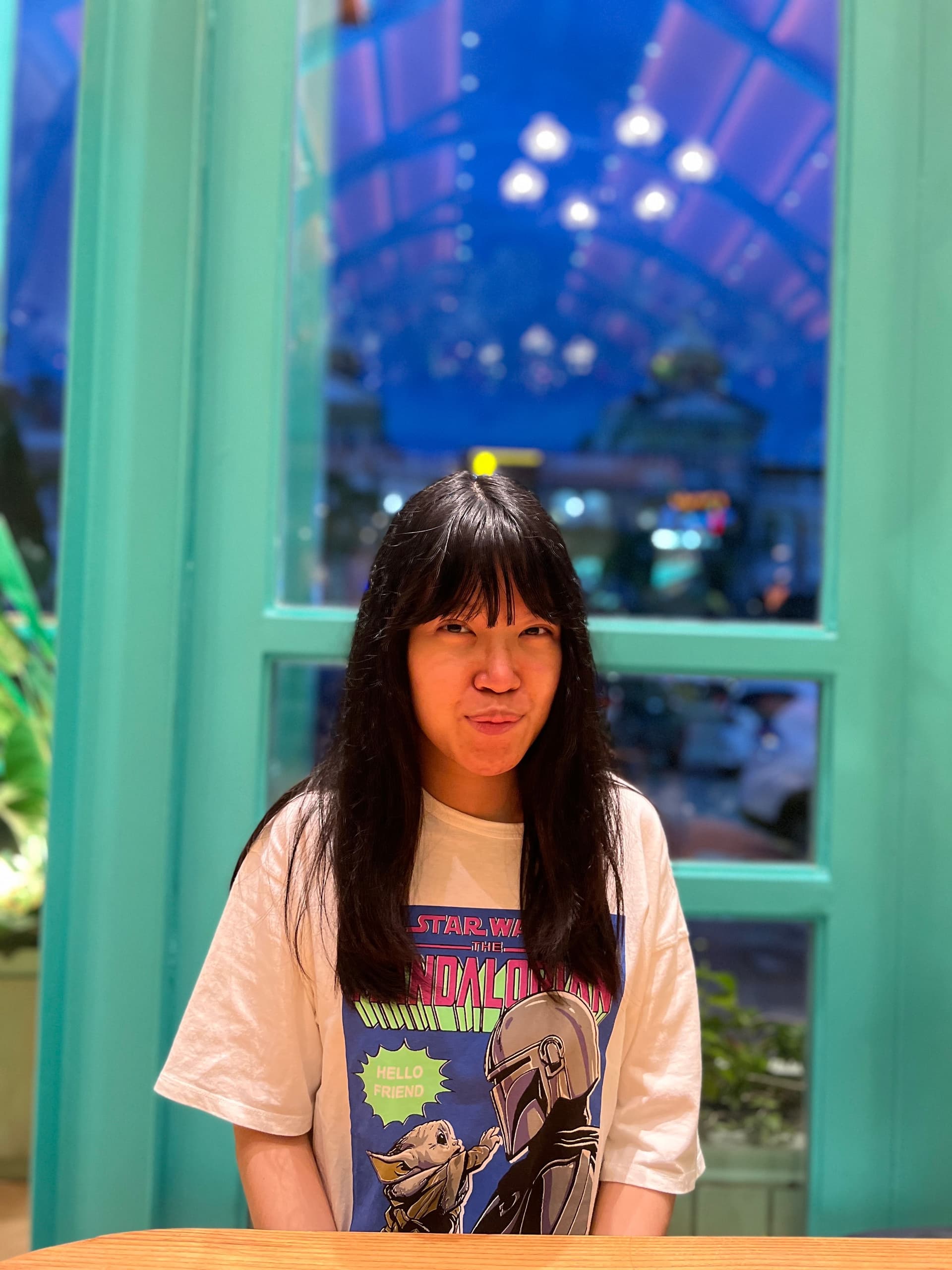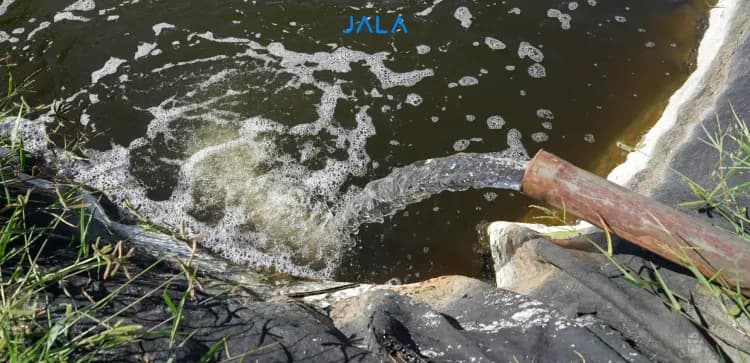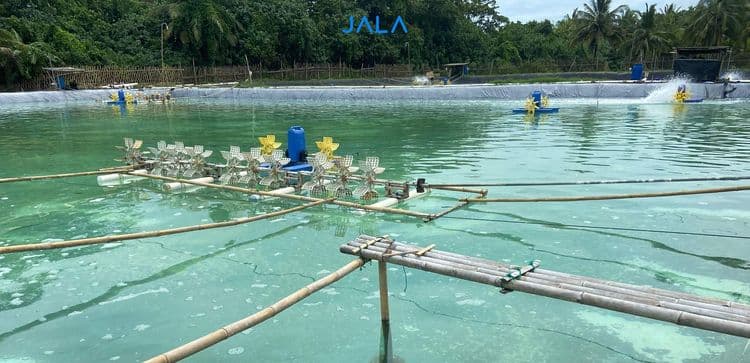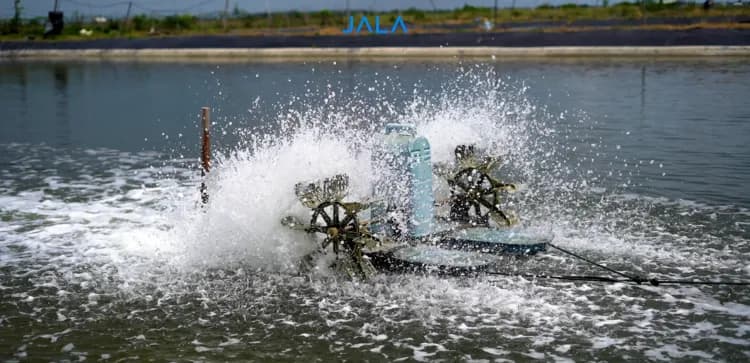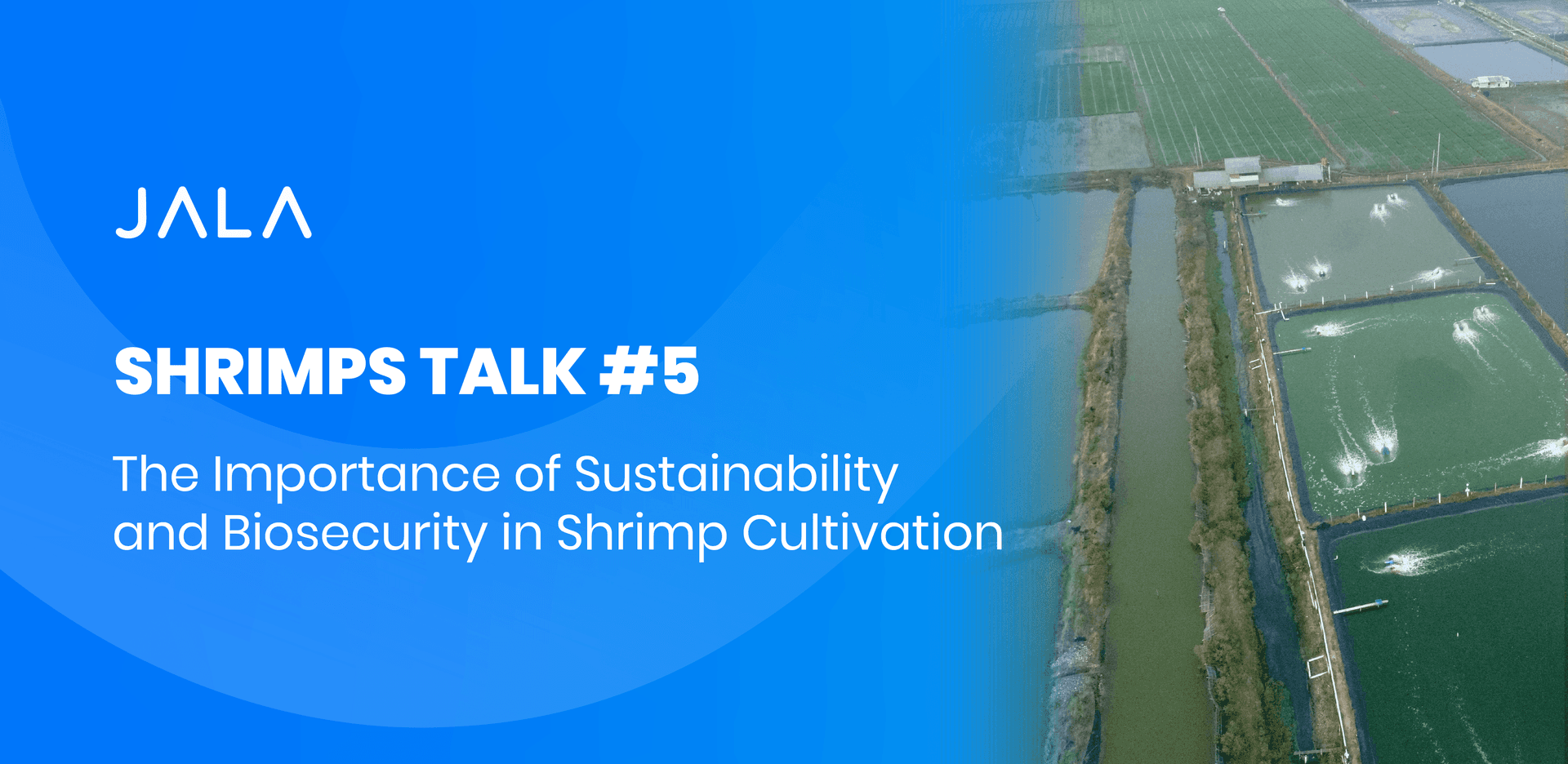
JALA’s online webinar series in collaboration with Forum Informasi Budidaya, SHRIMPS TALK, was held with 2 insightful topics: Management of a Sustainable Shrimp Farm Environment by Prof. Dr. Sinung Rahardjo, A.Pi., M.Si and Application of Biosecurity in Shrimp Farms by Dr. Ade Sunaryo, S.ST., M.Sc. This webinar had 313 attendees.
In the first session, Prof. Dr. Sinung discussed an eco-shrimp approach in managing shrimp farm environments. Disease is the biggest factor that causes failure in shrimp cultivation, and is affected by stress from the surrounding environment. Thus, cultivating shrimp with an ecosystem approach, or eco-shrimp, is important for a more sustainable and disease-free cultivation.
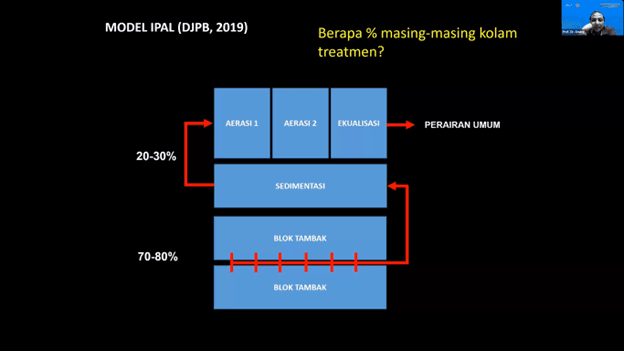 Prof. Dr. Sinung also discussed a new model for wastewater treatment plants, which is the nutrient trap model. With this new model, shrimp cultivation waste can be disposed of to the surrounding mangrove areas as fertilizer. For areas far from mangroves, seaweed can be used as means for biofiltration.
Prof. Dr. Sinung also discussed a new model for wastewater treatment plants, which is the nutrient trap model. With this new model, shrimp cultivation waste can be disposed of to the surrounding mangrove areas as fertilizer. For areas far from mangroves, seaweed can be used as means for biofiltration.
Prof. Dr. Sinung further explained that disease can be minimized by applying phytopharmacology (using medicinal plants). For example, research shows that the Solanum ferox L. and bitter ginger plant can be used to increase the survival rate (SR) of shrimp. However, the most important thing to remember is ensuring biosecurity in cultivating.
The second session, hosted by Dr. Ade, further discussed this topic. Biosecurity refers to all the procedures and policies implemented to prevent the spread of disease in shrimp cultivation. Some methods of biosecurity include the use of SPF (Specific Pathogen Free) stock which is now readily available.
 Another way of implementing biosecurity is by proper water management, which can be achieved by preparing a tank for water sedimentation before pouring it into the cultivation medium. Throughout cultivation, sanitary equipment for hands and feet should be prepared, and farm equipment should be sterilized to eliminate pathogens.
Another way of implementing biosecurity is by proper water management, which can be achieved by preparing a tank for water sedimentation before pouring it into the cultivation medium. Throughout cultivation, sanitary equipment for hands and feet should be prepared, and farm equipment should be sterilized to eliminate pathogens.
If diseases somehow still end up in the farm, farmers can do emergency harvest through dosing with KMNO4 by hanging it over flushing pipes with a 10 ppm dose and ± 5 ppm dose for sub road areas. Afterwards, disinfection should be done along with combustion and burial of shrimp remains.
Audiences were eager to listen to the two SHRIMPS TALK topics. They also asked questions regarding environmental management and wastewater treatment tips for their farm. JALA hopes that the presentations can help shrimp farmers have a more sustainable cultivation while implementing biosecurity.
Are you involved in the shrimp cultivation industry and want to improve your farm productivity with the latest information and insights? Make sure to follow JALA’s Instagram at @jalaindonesia so you don’t miss the next SHRIMPS TALK and other upcoming events. See you in the next SHRIMPS TALK!
